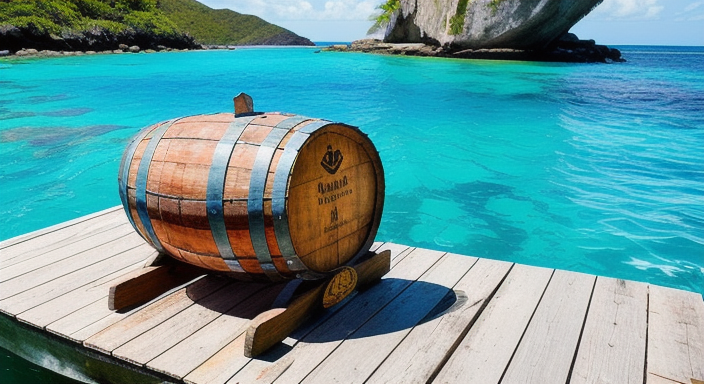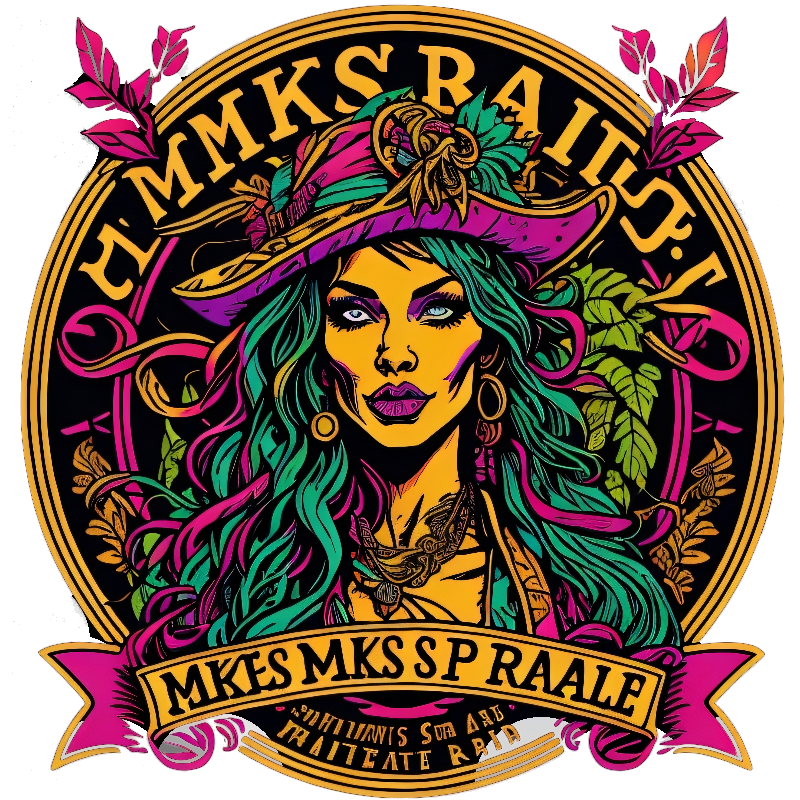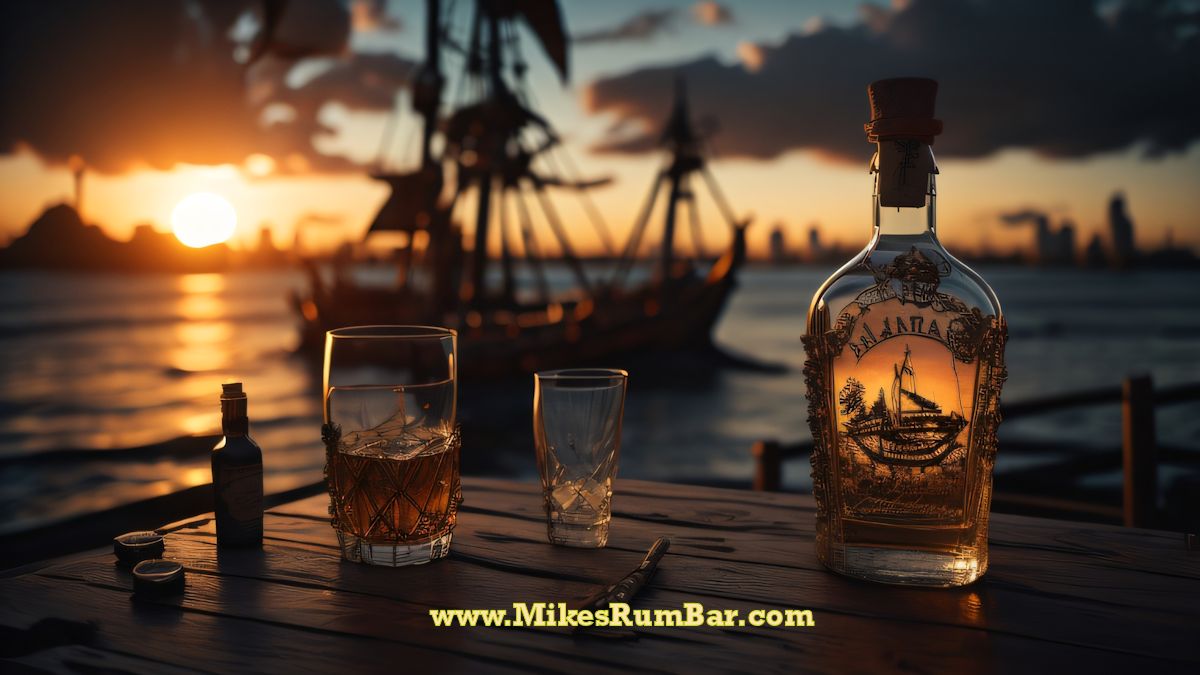Rum is a distilled alcoholic beverage made from sugarcane molasses or sugarcane juice. The name comes from the Spanish word “ron”, which means “honey of the cane”.
Rum is typically aged in oak barrels, which gives it a golden color and a smooth flavor. However, there are a variety of other barrels that can be used to age rum.
The Different Types of Rum: A Guide to Their Flavors and Origins
There are many different varieties of rum, each with its own unique flavor profile. Light rums are typically clear and have a light, sweet flavor. Dark rums are typically aged for longer periods of time, which gives them a darker color and a richer, more complex flavor. Spiced rums are made with added spices, such as cinnamon, nutmeg, and cloves. However, before we get too far ahead, let’s start here:
How Different Barrels Affect the Flavor of Rum
The type of barrel used to age rum can have a significant impact on the final flavor of the rum. Each of which imparts its own unique flavor profile.
- Bourbon barrels: Bourbon barrels are the most common type of barrel used to age rum. They impart a rich, vanilla flavor to the rum, as well as a hint of spice.
- Sherry barrels: Sherry barrels add a deep, nutty flavor to rum, as well as a touch of sweetness.
- Wine barrels: Wine barrels add a fruity flavor to rum, as well as a touch of acidity.
- Cognac barrels: Cognac barrels add a smooth, smoky flavor to rum.
- Port barrels: Port barrels add a sweet, raisiny flavor to rum.
In addition to the type of barrel, the length of time that the rum is aged can also affect the flavor. Rums that are aged for a longer period of time will tend to be smoother and have more complex flavors.
Rum can also be aged in a combination of different barrels. This is known as “cask finishing.” Cask finishing can add even more complexity to the rum’s flavor profile.
The use of different barrels to age rum is a complex and fascinating process. It is one of the things that makes rum such a versatile and delicious spirit.
Rhum vs. Ron vs. Rum: What’s the Difference?
The terms “rhum”, “ron rum”, and “rum” are all used to refer to rum, but there are some slight differences in their usage. However, it is important to remember “The code is more what you’d call ‘guidelines’ than actual rules.” – Barbossa, Pirates of the Caribbean
Rhum
Rhum is typically used to refer to rum that is made in the French Caribbean, such as Martinique and Guadeloupe. Rhum is made from fermented sugarcane juice, and it has a more vegetal and earthy flavor than rum that is made from molasses.
Ron
Ron is a term that is sometimes used to refer to rum that is made in Cuba, Puerto Rico, The Dominican Republic, Venezuela, Guatemala, Nicaragua, and Panama. Ron rum is typically made from fermented molasses, and it has a sweeter and smoother flavor than rhum.
Rum
Rum is the most general term, and it can be used to refer to rum that is made in any country. Rum can be made from fermented sugarcane juice or molasses, and it can have a wide variety of flavors, depending on the country where it is made.
In general, rhum is considered to be a higher quality rum than rum or ron rum. This is because rhum is made from fresh sugarcane juice, which gives it a more complex and flavorful profile. However, rum and ron rum can also be excellent spirits, and they are often less expensive than rhum.
Here is a table that summarizes the key differences between rhum, ron rum, and rum:

A barrel of rum, ready to be enjoyed by pirates and sailors alike
White Rum, Dark Rum, Spiced Rum: What’s the Difference?
Rum is typically classified into three main types: white rum, dark rum, and spiced rum.
White Rum
White rum is clear and has a light, sweet flavor. It is often used in cocktails, such as the Mojito and the Daiquiri. Some popular brands of white rum include Bacardi, Don Q, and Cruzan.
Dark Rum
Dark rum is amber or brown in color, and has a richer, more complex flavor than white rum. It is often used in cocktails, such as the Dark ‘N Stormy and the Planter’s Punch. Some popular brands of dark rum include Kraken, Myers’s, and Gosling’s.
Spiced Rum
Spiced rum is made with added spices, such as cinnamon, nutmeg, and cloves. It has a warm, spicy flavor, and is often used in cocktails, such as the Captain Morgan and the Zombie. Some popular brands of spiced rum include Captain Morgan, Sailor Jerry, and Kraken.
Different Proofs of Rum
Rum is typically sold at different proofs, which is a measure of its alcohol content. The proof of a rum is twice its alcohol by volume (ABV). For example, a 100-proof rum is 50% ABV.
But What Do the Different Proofs of Rum Really Mean?
The different proofs of rum offer distinct characteristics that influence both taste and consumption. Light rums, bottled at 80 proof like Bacardi Superior, are renowned for their smooth and mellow nature, making them an excellent choice for cocktails where they seamlessly blend with other flavors. On the other hand, dark rums like Kraken Black Spiced Rum, bottled at 90 proof, exude a rich and complex flavor profile, best enjoyed neat or over ice for a truly indulgent experience. Meanwhile, spiced rums such as Captain Morgan Original Spiced Rum, typically bottled at 80 proof, strike a harmonious balance between sweetness and spice, making them ideal for crafting flavorful cocktails.
Not only do the different proofs of rum impact the taste and texture, but they also influence how the rum is enjoyed. Light rums, with their subtle flavors, are commonly incorporated into cocktails to enhance the overall taste without overpowering other ingredients. Dark rums, with their pronounced richness, are often savored neat or on the rocks, allowing connoisseurs to appreciate the intricacies of their complex flavor profiles. Spiced rums, with their delightful fusion of sweetness and spice, are frequently utilized in cocktails, lending a burst of flavor to the drink.
But wait… What is ‘Navy Strength’ Rum?
The name “navy strength” rum comes from the fact that it was originally used by the British Royal Navy. In the 17th century, the Navy began issuing a daily ration of rum to its sailors. This was done as a way to improve morale and prevent scurvy. The rum was typically diluted with water, but it was still a strong drink. In fact, it had to be at least 57% alcohol by volume (ABV) in order to be considered “navy strength.” This was because the Navy was concerned that if the rum was too weak, it could be used to make explosives.
The tradition of issuing a daily ration of rum to sailors continued until the early 20th century. However, it was eventually discontinued due to concerns about alcoholism. Today, navy strength rum is still available for purchase, but it is no longer used by the Navy.
How to Choose the Right Proof of Rum
The best way to choose the right proof of rum is to consider how you plan to consume it. If you plan to use the rum in cocktails, a light rum at 80 proof is a good choice. If you plan to sip the rum neat or on the rocks, a dark rum at 90 proof is a good choice. If you plan to use the rum in a spiced rum cocktail, a spiced rum at 80 proof is a good choice.
Here are some additional details about the history of navy strength rum:
- The first recorded use of rum by the British Royal Navy was in 1655, after the Navy captured Jamaica from the Spanish.
- The daily rum ration was originally issued to sailors in the form of a “grog,” which was a mixture of rum and water. The amount of rum in the grog was gradually increased over time, and by the early 19th century, it was typically about 1 part rum to 4 parts water.
- In 1866, the Navy changed its regulations to require that all rum issued to sailors be at least 57% ABV. This was done in response to a number of incidents in which sailors had been injured or killed after drinking diluted rum.
- The tradition of issuing a daily ration of rum to sailors ended in 1970. However, navy strength rum is still available for purchase today.
Ultimately, the best way to choose a rum is to experiment and find one that you enjoy. There are many different types of rum available, so no matter what your preference, there is a rum out there for you.
Next time you’re looking for a delicious and refreshing drink, reach for a rum cocktail and enjoy!
More Pirate and Rum History

Join our crew and never miss out on our new rum recipes and Pirate Ladies’ adventures! Sign up for our newsletter here!





